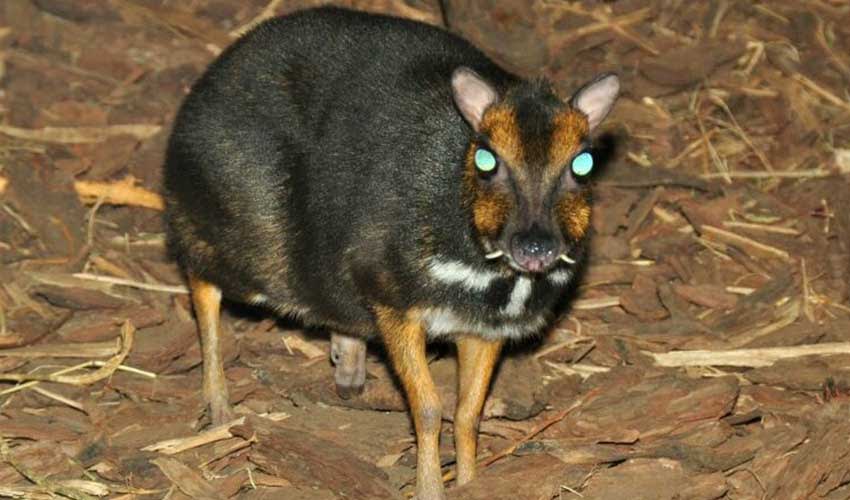One of the most enchanting and rare animals found in the Philippines. Endemic to a handful of small islands, mainly Balabac and nearby islets south of Palawan, it holds the special status of being the only mouse-deer species in the country. Despite its name, it is not actually a deer—or a mouse—but belongs to an ancient lineage of small hoofed mammals called chevrotains. At about the size of a domestic cat, with spindly legs, a rounded body, and enormous dark eyes, the Philippine mouse-deer looks like a delicate forest sprite that stepped out of a storybook.
What makes this mouse-deer especially distinct is its dark, sleek coat, which is much deeper in color compared to its Southeast Asian relatives. This adaptation likely helps it blend into the shaded understory of its forest home. Like other Tragulus species, it lacks antlers, and the males instead carry small, sharp canines that serve as their weapons in disputes. Its diet is mainly herbivorous, consisting of fruits, leaves, and shoots, but it is also opportunistic, occasionally nibbling on insects or fungi. This flexibility makes it well-suited for the patchy resources of its island environment.
The Philippine mouse-deer is also remarkable for its shy and elusive lifestyle. It is nocturnal, venturing out at night to forage while remaining hidden from predators. During the day, it retreats into dense thickets, relying on stillness and camouflage for protection. Unlike larger deer that roam in herds, the mouse-deer is largely solitary, sometimes pairing briefly during breeding. When startled, it can dart away with surprising speed, zigzagging through the undergrowth on its pencil-thin legs.
Distribution
 Malaysia
Malaysia Philippines
PhilippinesAnything we've missed?
Help us improve this page by suggesting edits. Glory never dies!
Suggest an editGet to know me
Terrestrial / Aquatic
Altricial / Precocial
Polygamous / Monogamous
Dimorphic (size) / Monomorphic
Active: Diurnal / Nocturnal
Social behavior: Solitary / Pack / Herd
Diet: Carnivore / Herbivore / Omnivore / Piscivorous / Insectivore
Migratory: Yes / No
Domesticated: Yes / No
Dangerous: Yes / No




